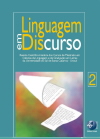Branagh’s “Frankstein”: the making of monstrosity in film
Palavras-chave:
Filme, Monstruosidade, CulturaResumo
Abstract: Along human history the imaginary figure of the monster has always functioned as a reference to distinguish the human from the non-human, the civilized from the non-civilized, the good from evil. In Mary Shelley's Frankenstein film director Kenneth Branagh presents a very faithful adaptation of Shelley's story to cinema. In the present essay it will be analyzed how cinematic technical devices, and, particularly the visual resources, work to reproduce on the screen some of the issues which define human and monstrous characteristics and the human/monster opposition as they appear in the original story.Resumo: Ao longo da história humana, a figura imaginária do monstro sempre funcionou como uma referência para distinguir o humano do não humano, o civilizado do não civilizado, o bem do mal. No filme Frankenstein (Mary Shelley's Frankenstein, 1994), o diretor Kenneth Branagh procura apresentar uma adaptação para o cinema bastante fiel ao romance original de Mary Shelley. Neste artigo será discutido como recursos técnicos do cinema - em especial os recursos visuais - trabalham para reproduzir na tela alguns dos elementos que definem as características humanas e aquelas dos monstros, bem como a oposição humano/monstruoso, conforme aparecem na história original.


